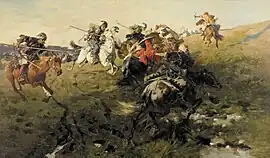| Part of a series on |
| Slavery |
|---|
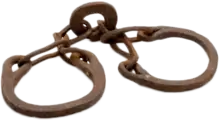 |
The Black Sea slave trade, sometimes known as the Crimean slave trade, was a slave trade across the Black Sea trafficking people from Europe and Caucasus to slavery in the Mediterranean and the Middle East. The Black Sea slave trade was a center of the slave trade between Europe and the rest of the world from antiquity until the 19th-century.[1]
The Black Sea was situated in a region historically dominated by the margins of empires, conquests and major trade routes between Europe, the Mediterranean and Central Asia, notably the Ancient Silk road, made the Black Sea ideal for a slave trade of war captives sold along the trade routes.[2]
Antiquity
In antiquity, enslaved people were sold via the Ancient Greek and Roman city ports of the Black Sea East to Asia via the Silk road, and West to the Ancient Mediterranean world.[3]
In antiquity, the Black Sea was called the Pontic Sea and people from the region often simply called Pontics. Greek colonies were established along the Black Sea, which engaged in slave trade between the tribes of the interior North of the Black Sea and the Mediterranean. Slaves were sold by their families or as war captives to the Greek cities, who exported them West to the Mediterranean or East to Asia along the Silk road.
In the 1st-century, the Roman writer Strabo described Dioscurias, the major Black Sea port of the Caucasus, and the Greek city of Tanais, as major ports of the Pontic slave trade, from which "Pontic" slaves, such as Scythians or Paphlagonians, who had been sold as war captives by enemy tribes or sold by their families as adolescens, were exported to the Mediterranean and could be find in Ancient Athens.[4]
Middle ages
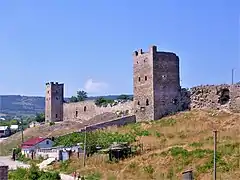
During the Middle ages, informal slave zoones were formed alongside religious borders, which were also crossed at the Black Sea region. Both Christians and Muslims banned the enslavement of people of their own faith, but both aproved of the enslavement of people of a different faith.[5]
The slave trade thus organized alongside religious principles. While Christians did not enslave Christians, and Muslims did not enslave Muslims, both did allow the enslavement of people they regarded to be heretics, which allowed Catholic Christians to enslave Orthodox Christians, and Sunni Muslims to enslave Shia Muslims.[6]
However, both Christians and Muslims approved of enslaving Pagans, who came to be a preferred target of the slave trade in the Middle ages, and Pagan war captives were sold by Pagan enemies to the slave trade.[7]
Byzantine slave trade (5th-century–13th-century)
During the early Middle ages until the 11th-century, the Black Sea was one of the two slave trade destinations of the viking Volga trade route, which exported slaves to the Abbasid Caliphate and the Middle East via the Caspian Sea and Iran; and to the Byzantine Empire and the Mediterranean via Dnepr and the Black Sea.[8]
Italian slave trade (13th-century–15th-century)
In the late Middle ages (13th-century-15th-century), the Black Sea was the center of the Italian slave trade, which exported slaves from Eastern Europe via the Italian cities on the Crimea to Spain and Italy and to the Islamic Middle East.[9]
Crimean Khanate slave trade (1441–1783)
During the Early Modern age the Crimean Khanate (1441-1783) was a major center of the international slave trade, the main source of income of the Khanate and one of the biggest sources of slaves to the Ottoman Empire. During this period the Crimea was the destination of the Crimean–Nogai slave raids in Eastern Europe, and European and Circassian slaves were trafficked to the Middle East via the Crimea.[10] During the Ottoman Empire, it was one of two big slave routes trafficking European slaves to the Middle East alongside the Barbary slave trade; while the Barbary slave trade provided European slaves from Western Europe, the Black Sea slave trade provided the Middle East with slaves from Eastern Europe.
Circassian slave trade (18th-century–20th-century)
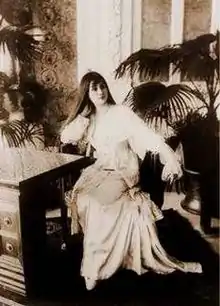
Background
The Crimean slave trade was ended with the Annexation of the Crimean Khanate by the Russian Empire in the late 18th-century. However, the slave trade with Circassians from the Caucasus to the Middle East was redirected from the Crimea, and continued until the 1900s.
From the late 18th-century onward, when first the slave trade of the Crimean Khanate ended with the annexation of 1783, followed by the end of the Barbary slave trade after the Barbary war, the Circassian slave trade became the main source of white slaves to the Islamic Middle East, and these slaves were referred to as "Circassians".[11]
In the context of the Circassian slave trade, the term Circassians did not necessarily refer to ethnic Circassians, but was used as an umbrella term for a number of different ethnicities from the Caucasus region, such as Georgians, Adyge and Abkhazians, in the same fashion as the term "Abbyssinians" was used as a term also for African slaves who were not from Abyssinia.[12]
Slave trade
Caucasus was an ideal area for slave trade, since it was a fragmented border zone affected by constant warfare and political instability.[13] Prior to the Russian conquest, many Circassian tribal leaders and princes acknowledged the suzerainty of the Ottoman sultan and converted to Islam, conducted warfare toward other Circassians and sold the children of their own Circassian serfs to Ottoman slave traders as a way to secure their own finances.[14] Circassian parents became notorious for their alleged willingless to sell their children to Ottoman slave traders, because their poverty made the high demand for Circassian girls highly lucrative.[15]
It was commonly claimed that Circassian girls were eager to be enslaved and asked their parents to sell them to the traders, because it was the only way for them to enhance their class status.[16] It was commonly known that Circassian girls were mainly bought to become wives or concubines to rich men, which made the Circassian slave trade to be viewed as a form of marriage market, with the girls being raised by the slava traders as "apprentices" for marriage and then sold to become the wives or concubines of rich men.[17] A common claim was also that Circassian girls were seen laughing and joking at the slave market, which was seen as another sign that they participated willingly.[18]
In 1854, the Ottoman Empire banned the slave trade in white women after pressure from Great Britain and France.[19] However, in March 1858 the Ottoman Governor of Trapezunt informed the British Consul that the 1854 ban had been a temporary war time ban due to foreign pressure, and that he had been given orders to allow slave ships on the Black Sea pass on their way to Constantiople, and in December formal tax regulations was introduced, legitimazing the Circassian slave trade again.[20]
Between 1856 and 1866, at least half a million Circassians were exiled from Caucasus by the Russians.[21] The Circassian refugee colonies in Anatolia and Constantinople continued to sell girls, in this case, Circassians are noted to have sold the children of their own Circassian slaves or serfs directly to the Ottoman slave traders, or to the buyers themselwes.[22] The slave trade from Caucasus itself also continued. In 1872–1873, British sources and press reported that Circassian slaves were now transported over the Black Sea via regular ships – some of whom owned by European companies – from Black sea ports such as Trabzon and Samsun to Constantiople.[23]
Slave market
Constantiople was the center of the Circassian slave trade. From 1846 onward, white slave girls were no longer sold in the open slave market, but to the buyer directly in the residence of the slave trader.[24] The Circassian girls were bought by the slave traders very young, were raised by the slave trader and his family as "foster daughters" to become ideal wives, and sold via a "marriage broker" to the buyer for money in the residence of the slave trader.[25] The hidden nature of the Circassian slave trade made it invisible to foreign diplomats, and exposed it to less public criticism than the more open African slave trade.
White women slaves were primarily bought to become wives or concubines (sex slaves) for rich men. To buy a daughter-in-law was seen as a good alternative when arranging a marriage, since she was likely to become humble wife, lacking both her own money as well as relatives, and completely dependant upon her new family.[26] Since white women were very expensive on the slave market, this essensially functioned as a marriage market for the upper classes, and many of the consorts of the Ottoman and Egyptian rulers were former victims of the Circassian slave trade, which made it a sensitive subject for Western diplomats to criticize.[27]
There was a greater reluctance from Ottoman authorities to prohibit the Circassian slave trade than the African slave trade, because the Circassian slave trade was regarded as in effect a marriage market, and it continued until the end of the Ottoman Empire (1922).[28]
The Circassian slave trade were maintained under the guise as a marriage market. The American journalist E. Alexander Powell described the slave trade to the harems of North African Maghreb in 1912, that when a rich Muslim man wished to enlarge his harem:
- "...he applies to one of the well-known dealers in Tetuan, Tripoli or Trebizond, a marriage contract is drawn up, and all the ceremonies of legal wedlock are gone through by proxy. By resorting to these fictious marriages and similar subterfuges, the owner of a harem may procure as many slaves, white, brown or black, as he wishes, and once they are whithin the walls of his house, noone can possibly interfere to release them, for, the polic being under no conditions permitted to violate the privance of a harem, there is obviously no safeguard for the liberty, or even then lives, ot its inmates. As a result of this sustem, a constant stream of female slaves - fair-haired beauties from Georgia and Circassia, brown-skinned Arab girls from the borders of the Sahara, and negresses from Equatoria - trickles in to the North African coast towns by various roundabaout channels, and though the European officials are perfectly well aware of this conditions of things, they are poverwless to end it. The women thus obtained, though nominally wives, are in reality slaves, for they are bought for money, they are not consulted about their sale, they cannot go away if they are discontented, and their very lives are at the disposal of their masters. If that is not slavery, I dont know what is".[29]
Girls from the Caucasus were still trafficked to the Middle East in the 1920s. In 1924, the law prohibited the enslavement of white girls (normally Armenian or Georgian) on Kuwaiti territory, but in 1928 at least 60 white slave girls were discovered.[30]
Gallery
_-_The_Slave_Market%252C_Constantinople_-_NG_2400_-_National_Galleries_of_Scotland.jpg.webp) William Allan (1782-1850) - The Slave Market, Constantinople.
William Allan (1782-1850) - The Slave Market, Constantinople.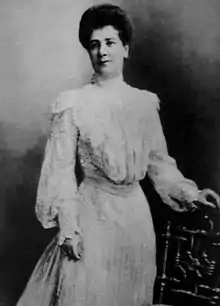 Neshedil Qadin, victim of the Circassian slave trade.
Neshedil Qadin, victim of the Circassian slave trade.
See also
- Avret Pazarları
- Balkan slave trade
- Red Sea slave trade
- History of slavery in the Muslim world
- History of concubinage in the Muslim world
- Human trafficking in the Middle East
- Turkish Abductions
- Barbary slave trade
- Kazakh Khanate slave trade on Russian settlement
- Ottoman wars in Europe
- Slavery in Russia
- Slavery in the Ottoman Empire
- List of Mongol and Tatar attacks in Europe
- Annexation of the Crimean Khanate by the Russian Empire
References
- ↑ Slavery in the Black Sea Region, C.900–1900: Forms of Unfreedom at the Intersection Between Christianity and Islam. (2021). Nederländerna: Brill. 3
- ↑ The Palgrave Handbook of Global Slavery Throughout History. (2023). Tyskland: Springer International Publishing. 160
- ↑ Slavery in the Black Sea Region, C.900–1900: Forms of Unfreedom at the Intersection Between Christianity and Islam. (2021). Nederländerna: Brill. 19
- ↑ Slavery in the Black Sea Region, C.900–1900: Forms of Unfreedom at the Intersection Between Christianity and Islam. (2021). Nederländerna: Brill. 19
- ↑ Slavery in the Black Sea Region, C.900–1900: Forms of Unfreedom at the Intersection Between Christianity and Islam. (2021). Nederländerna: Brill. 5
- ↑ Korpela, J. (2018). Slaves from the North: Finns and Karelians in the East European Slave Trade, 900–1600. Nederländerna: Brill. 242
- ↑ Korpela, J. (2018). Slaves from the North: Finns and Karelians in the East European Slave Trade, 900–1600. Nederländerna: Brill. 242
- ↑ The Palgrave Handbook of Global Slavery Throughout History. (2023). Tyskland: Springer International Publishing. 126
- ↑ Slavery in the Black Sea Region, C.900–1900: Forms of Unfreedom at the Intersection Between Christianity and Islam. (2021). Nederländerna: Brill. 1
- ↑ Slavery in the Black Sea Region, C.900–1900: Forms of Unfreedom at the Intersection Between Christianity and Islam. (2021). Nederländerna: Brill.
- ↑ Zilfi, M. (2010). Women and Slavery in the Late Ottoman Empire: The Design of Difference. Storbritannien: Cambridge University Press. p. 126-127
- ↑ Zilfi, M. (2010). Women and Slavery in the Late Ottoman Empire: The Design of Difference. Storbritannien: Cambridge University Press. p.
- ↑ Zilfi, M. (2010). Women and Slavery in the Late Ottoman Empire: The Design of Difference. Storbritannien: Cambridge University Press. p. 126-127
- ↑ Zilfi, M. (2010). Women and Slavery in the Late Ottoman Empire: The Design of Difference. Storbritannien: Cambridge University Press. p. 126-127
- ↑ Zilfi, M. (2010). Women and Slavery in the Late Ottoman Empire: The Design of Difference. Storbritannien: Cambridge University Press. p. 126-127
- ↑ Zilfi, M. (2010). Women and Slavery in the Late Ottoman Empire: The Design of Difference. Storbritannien: Cambridge University Press. p. 126-127
- ↑ Zilfi, M. (2010). Women and Slavery in the Late Ottoman Empire: The Design of Difference. Storbritannien: Cambridge University Press. p. 126-127
- ↑ Zilfi, M. (2010). Women and Slavery in the Late Ottoman Empire: The Design of Difference. Storbritannien: Cambridge University Press. p. 126-127
- ↑ Toledano, Ehud R. (1998). Slavery and Abolition in the Ottoman Middle East. University of Washington Press. p. 31-32
- ↑ Toledano, Ehud R. (1998). Slavery and Abolition in the Ottoman Middle East. University of Washington Press. p. 31-32
- ↑ Zilfi, M. (2010). Women and Slavery in the Late Ottoman Empire: The Design of Difference. Storbritannien: Cambridge University Press. p. 126-127
- ↑ Toledano, Ehud R. (1998). Slavery and Abolition in the Ottoman Middle East. University of Washington Press. p. 31-33
- ↑ Toledano, Ehud R. (1998). Slavery and Abolition in the Ottoman Middle East. University of Washington Press. p. 31-33
- ↑ Zilfi, M. (2010). Women and Slavery in the Late Ottoman Empire: The Design of Difference. Storbritannien: Cambridge University Press. p. 177
- ↑ Zilfi, M. (2010). Women and Slavery in the Late Ottoman Empire: The Design of Difference. Storbritannien: Cambridge University Press. p. 217
- ↑ Gordon, Murray (1989). Slavery in the Arab World. New York: Rowman & Littlefield. ISBN 978-0-941533-30-0. p.79-89
- ↑ Zilfi, M. (2010). Women and Slavery in the Late Ottoman Empire: The Design of Difference. Storbritannien: Cambridge University Press.
- ↑ Zilfi, M. (2010). Women and Slavery in the Late Ottoman Empire: The Design of Difference. Storbritannien: Cambridge University Press. p. 217
- ↑ Powell, E. A. (2023). The Last Frontier: The White Man's War for Civilisation in Africa. Tjeckien: Good Press.
- ↑ ZDANOWSKI, J. The Manumission Movement in the Gulf in the First Half of the Twentieth Century, Middle Eastern Studies, 47:6, 2011, p. 871.
